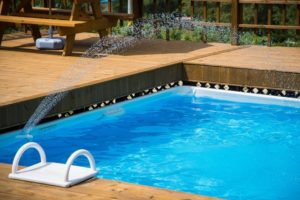The question comes up once and a while as to whether it’s safe to use tap water for long term water storage. There is a lot of bad information going around regarding this topic and I am going to try to clear a few things up. The more you can set it and forget it, the more you can focus on other preps.
First, it goes without saying that storing as much water as you can for an SHTF situation is extremely important for many reasons. I suggest you have at least one gallon of water per person per day and that can add up fast. See our article on basic long-term water storage for a few more tips.
Water Storage Container Sizes
The size of the storage container is up to you and your situation but here are a few things to consider.
- Smaller water containers are better if you think you will need to bug out but it’s harder to store a large quantity if you have a large family.
- Medium sized water containers are best if you are bugging in or out and don’t have space or the structure for a 55-gallon barrel. This method of storage is the best of both worlds.
- Large water storage is best if you have the structure and space to hold it and plan on staying put during a disaster scenario.
- I do not recommend reusing milk jugs for water storage, they will break down quickly and leave you a mess.
So, for this article, I will focus on storing tap water in a medium-sized water container.
Can You Store Tap Water Long-Term or Should It Be Treated First?

Because tap water varies in different locations, I can’t simply answer yes. In some areas, you can just fill up your clean container and store it, but in other areas, you may need to add additional treatment to the water.
The main factor in how well your water will store is the chlorine content. All city water supplies have chlorine in their water to kill bacteria, but the level is not the same everywhere. Chlorine is an important ingredient in your water storage because the longer your water sits, the bigger the chance that something harmful could grow.
How Much Chlorine is To Much?
According to the Environmental Protection Agency (EPA), The allowable chlorine levels in drinking water (up to 4 parts per million) pose “no known or expected health risk [including] an adequate margin of safety.” Public water supply usually contains chlorine from 1 to 4 ppm to keep it safe. Further, they state that over 98 percent of U.S. water supply systems that disinfect drinking water use chlorine.
That being said, you want to get your stored water within the upper range of those numbers, somewhere in the 2 to 3 ppm range.
How Do I Check My Chlorine Level?
There are two methods that I am familiar with, one is easy and the other involves purchasing a chlorine test kit.
The Smell Test
If you can detect a small hint of chlorine in the water by smell, you are at the upper range of the ideal ppm. Be advised, this method is not as accurate as testing with a kit because it is relative to a person’s sense of smell.
Chlorine Test Kits

can use a swimming pool test kit to test your chlorine levels in the water. They are inexpensive and easy to use. They come with test strips you dip in the water and depending on the color, it will tell you if you are at the right level or below.
How to Raise the Chlorine Level in Stored Water
You can raise the chlorine level in your water with regular store-bought unscented concentrated liquid bleach.
Make Sure the Bleach You Purchase Follows These Tips:
- Active ingredient sodium hypochlorite (NaOCI) with a concentration of between 5.25% and 6%
- No additives
- Unscented
NOTE: You don’t need to purchase any Emergency Water Preserver Concentrate that they sell online. Sure, they are convenient, but they are nothing more than household bleach.
How Much Chlorine Should I Add?
Let’s start small, add three drops of bleach per gallon of water and then check the chlorine levels. If they are still low, repeat by adding three more drops. Once you reach a level that you are satisfied with, write down your “recipe” for future use so you don’t continually have to test.
How to Lower Chlorine Levels in Stored Water
The need to lower chlorine levels is extremely rare but if you must, here are some methods to use.
- Let the chlorine evaporate
- Pour the water back and forth between two containers
- Filter the water
- Dilute the water
Is Chlorine Safe?
There has been a lot of companies touting their water filter and how important it is to filter your tap water before drinking or storing. They play on our fears that chlorine is unhealthy and a risk. The fact is, they forget to mention the benefits of chlorine as an inexpensive and highly effective disinfectant. The levels you find in your city water supply is within the limits of safety.
How Long Will My Water Store?
FEMA (Federal Emergency Management Agency) recommends that you rotate your water every six months. The fact is, water may become contaminated but it does not go bad. If you are unsure about the water, you can aerate it by pouring it between two clean containers or filtering it. Water stored in the right conditions, will last a long time. It is still a good idea to rotate your water for peace of mind.
Finally
Just make sure your container is clean and sanitized, and you have an acceptable level of chlorine and you are ready to store. The next challenge will be finding the space to store your water. And, make sure wherever you store your water, it has the structural integrity to hold all that weight. It is also a good idea to keep your water stores in a cool and dry space. The garage, attic or outside may not be the best place.
Tap water isn’t free but it is far more cost effective than buying your water. When done right, this is another prep you can check off your list allowing you to move on to other things.
Fillem’ up and keep on preppin’!



























